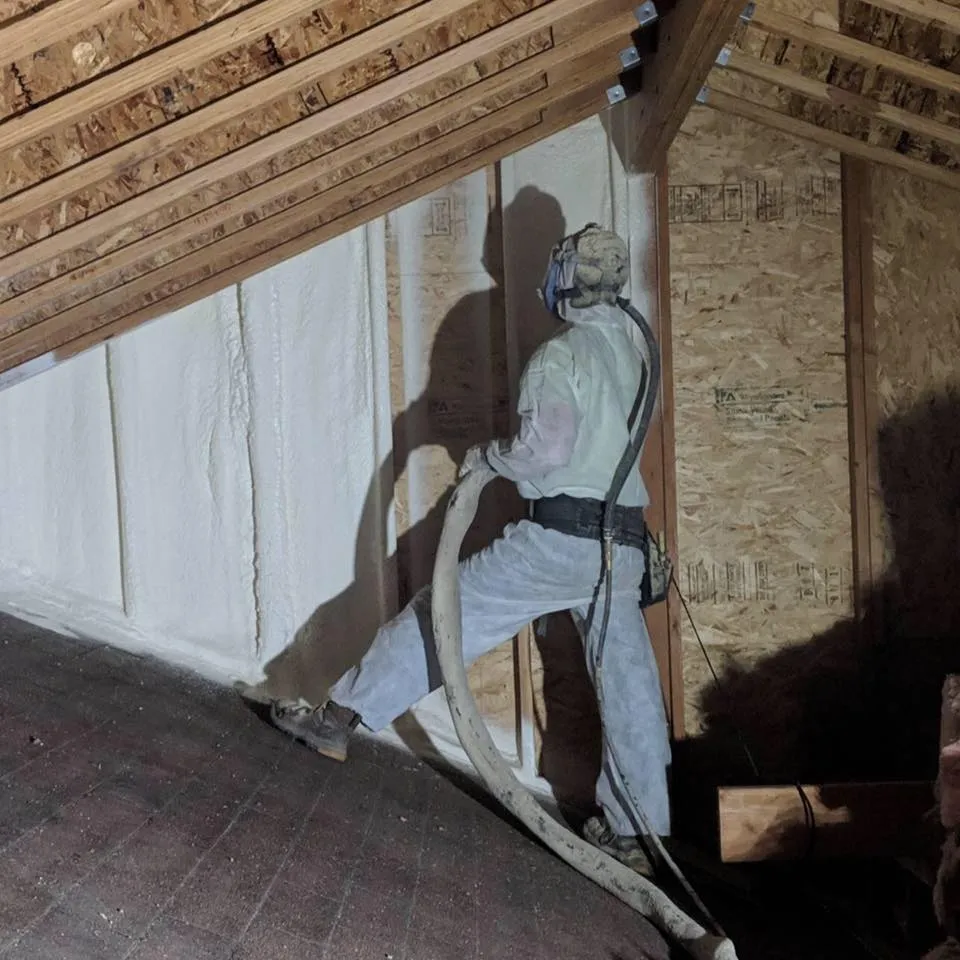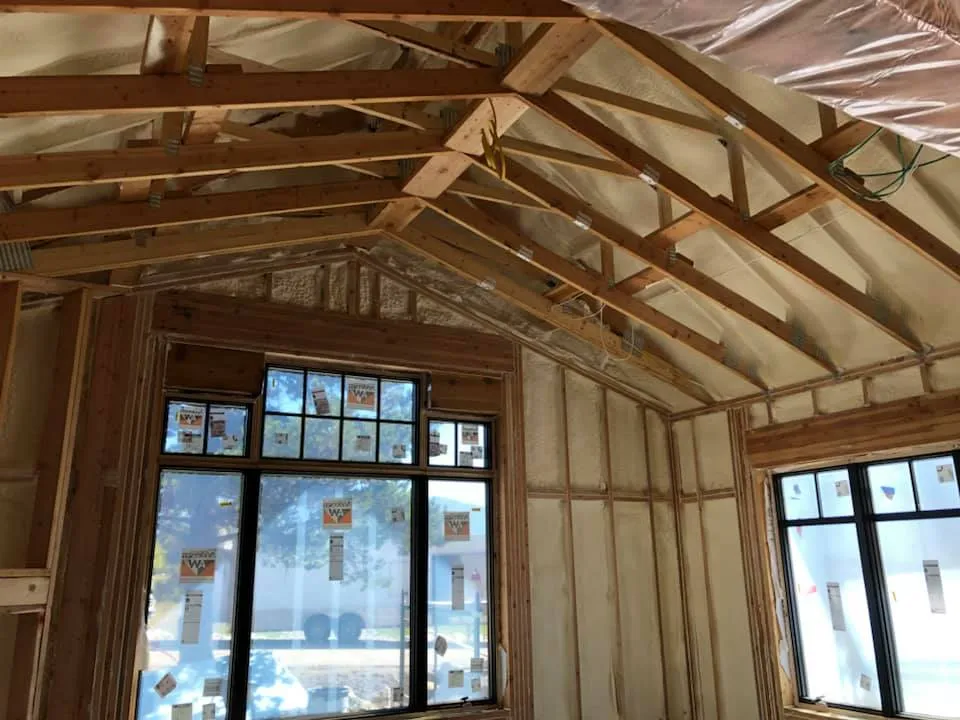
When budgeting for a spray foam insulation project in Sparks, the price per board foot is only the starting point. Several hidden factors can significantly influence the final cost, turning a seemingly straightforward estimate into a much larger investment. The most common overlooked expenses include extensive site preparation like removing old insulation, the project’s structural complexity, the specific type and thickness of foam required for the climate, and necessary post-application work such as installing fire-retardant barriers.
Understanding these variables is key to developing an accurate budget and avoiding unexpected costs. This guide breaks down the elements that affect a spray foam installation price, drawing from extensive field experience in the Sparks area. The information provided here helps property owners ask the right questions and get a complete, transparent quote that accounts for the full scope of the job.
Before any foam can be sprayed, the application area must be properly prepared. This preparatory phase is often a source of additional costs that are not included in a basic square-footage estimate.
If you are retrofitting an existing building, the old insulation usually needs to be removed. This process can be labor-intensive and messy, especially with materials like blown-in cellulose or deteriorating fiberglass batts. The cost for removal depends on the type of insulation, the size of the area, and accessibility. In some cases, discovering mold, pest infestations, or moisture damage underneath the old insulation can lead to remediation costs before the new foam can be applied.
Spray polyurethane foam requires a clean, dry, and sound surface to adhere correctly. Any dust, debris, grease, or moisture on the substrates (wall studs, roof decking, etc.) must be thoroughly cleaned. If any surfaces are damaged, such as rotting wood or crumbling masonry, they will need to be repaired or replaced. These cleaning and repair tasks add labor and material costs to the project total.
Bonus Tip: Property owners can help reduce preparation time and cost by clearing the work area of personal items, furniture, and any obstacles before the installation crew arrives. This allows the team to get straight to work on the essential prep tasks.
Not all installations are created equal. The layout and condition of the space being insulated play a big part in determining the final price. A simple, open-walled new construction project will almost always cost less than a complex retrofit in a finished home.
Factors that increase complexity and labor costs include:
The two main types of spray polyurethane foam, open-cell and closed-cell, have different properties and price points. The choice between them depends on the specific application, budget, and performance goals. In Sparks, where the climate includes both hot summers and cold winters, selecting the right type and thickness is essential for energy efficiency. According to the U.S. Department of Energy, areas like Sparks fall into Climate Zone 5, which has specific R-value recommendations for different parts of a building.
| Feature | Open-Cell Foam | Closed-Cell Foam |
|---|---|---|
| R-Value per Inch | ~R-3.5 to R-3.8 | ~R-6.0 to R-7.0 |
| Air Barrier | Yes | Yes |
| Vapor Permeability | Permeable (allows drying) | Impermeable (acts as a vapor barrier) |
| Density & Rigidity | Low-density, soft, flexible | High-density, rigid, adds structural strength |
| Typical Cost | Lower | Higher |
| Common Uses | Interior walls, sound dampening | Roof decks, exterior walls, foundations |
Closed-cell foam is generally more expensive due to its higher density and greater insulating capability per inch. However, its ability to act as a vapor barrier and add structural strength can make it the better long-term investment for roofs and exterior walls in the Northern Nevada climate.
The work is not finished once the foam is sprayed. Several post-application steps are often required by building codes and for a clean, finished appearance.
This is one of the most significant and frequently overlooked costs. Building codes from organizations like the International Code Council mandate that spray foam applied in interior, occupied spaces must be covered by a 15-minute thermal barrier, such as half-inch drywall. In unoccupied areas like attics or crawl spaces, an ignition barrier (a specialized coating) may be required. These fire-protective measures are a legal requirement for safety and add material and labor costs to the final invoice.
During application, spray foam expands and may protrude beyond the wall studs or rafters. This excess foam must be trimmed back so that drywall and other finishing materials can be installed flat. This trimming process, known as “scarifying,” is done by hand and is labor-intensive. The resulting foam waste must also be collected and disposed of, which may involve disposal fees.
Bonus Tip: Discuss ventilation with your contractor. Creating a very airtight building with spray foam can sometimes necessitate the installation of a mechanical ventilation system, such as a heat recovery ventilator (HRV), to ensure healthy indoor air quality, a point often highlighted by the Environmental Protection Agency.
Before signing a contract, it’s important to evaluate more than just the price.

Pricing is generally stable, but scheduling can be more difficult during peak seasons like fall and early winter. The application itself is also temperature-sensitive, so professional crews use heated rigs to maintain proper chemical temperatures even on cold Sparks days.
In most retrofit projects, yes. Spray foam needs a clean substrate to bond to. Leaving old, compressed, or contaminated insulation in place can trap moisture and compromise the effectiveness of the new foam.
Retrofit projects are typically 20-40% more expensive than new construction installations. This is due to the added labor for removing old materials, working around existing finishes and obstacles, and managing tighter access.
Financial incentives for energy-efficient upgrades can change. Property owners should check the Database of State Incentives for Renewables & Efficiency (DSIRE) for the latest information on any available state or federal tax credits and utility rebates in Nevada.
When planning a spray foam installation, looking beyond the initial per-foot price is essential. By accounting for site preparation, project complexity, foam type, and post-application necessities like fire barriers, you can form a realistic budget. A thorough evaluation of these hidden cost factors ensures your project runs smoothly and delivers the long-term energy performance you expect.
A complete and accurate quote requires a detailed assessment of the property. For a professional evaluation that covers all aspects of your project in the Sparks area, contact Nevada Urethane. You can discuss your specific needs by calling (775) 397-2820 or by sending an email to [email protected] to schedule an on-site consultation.